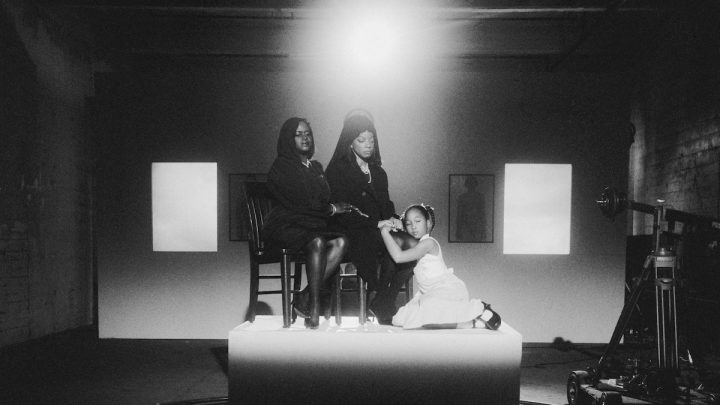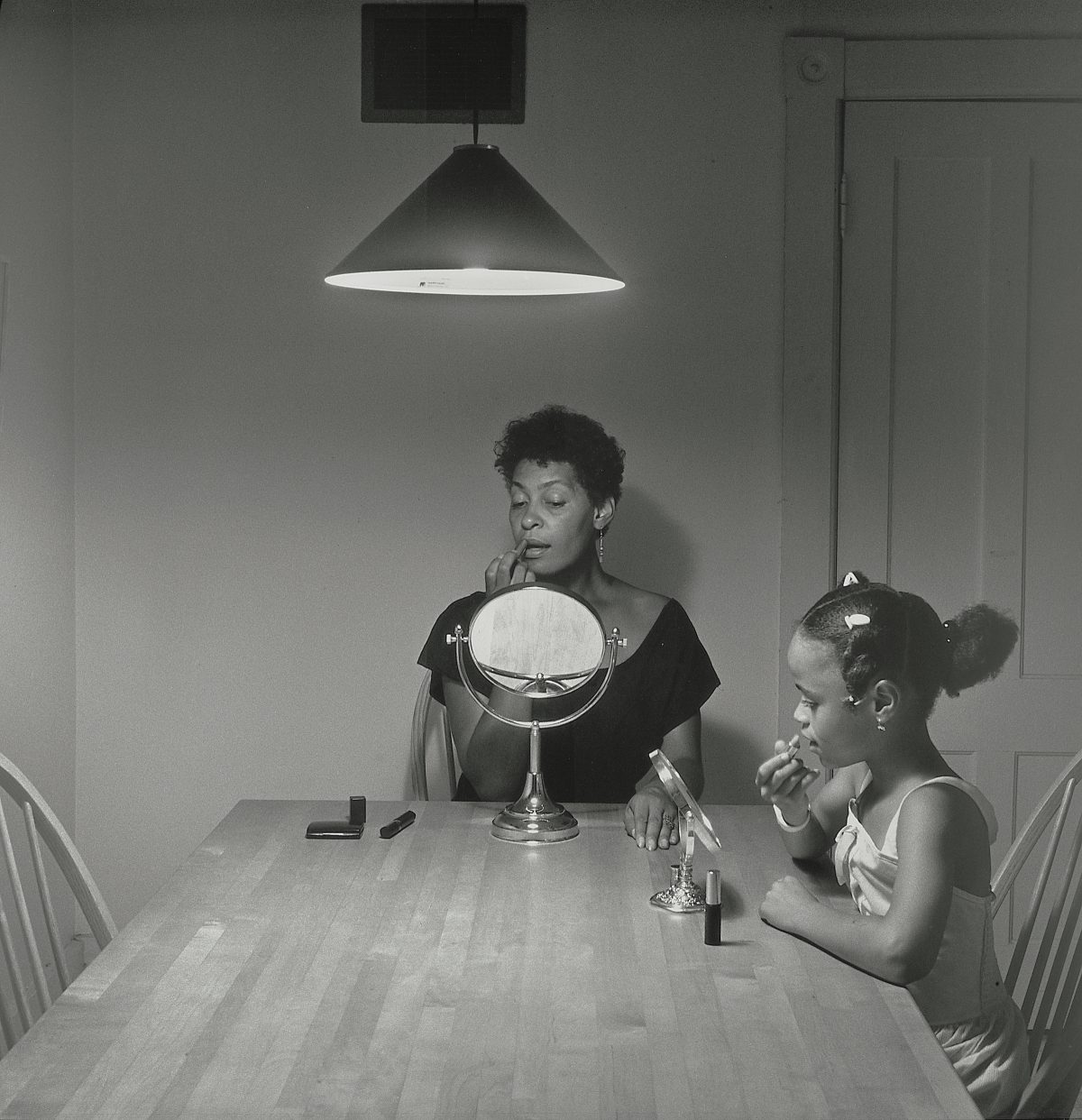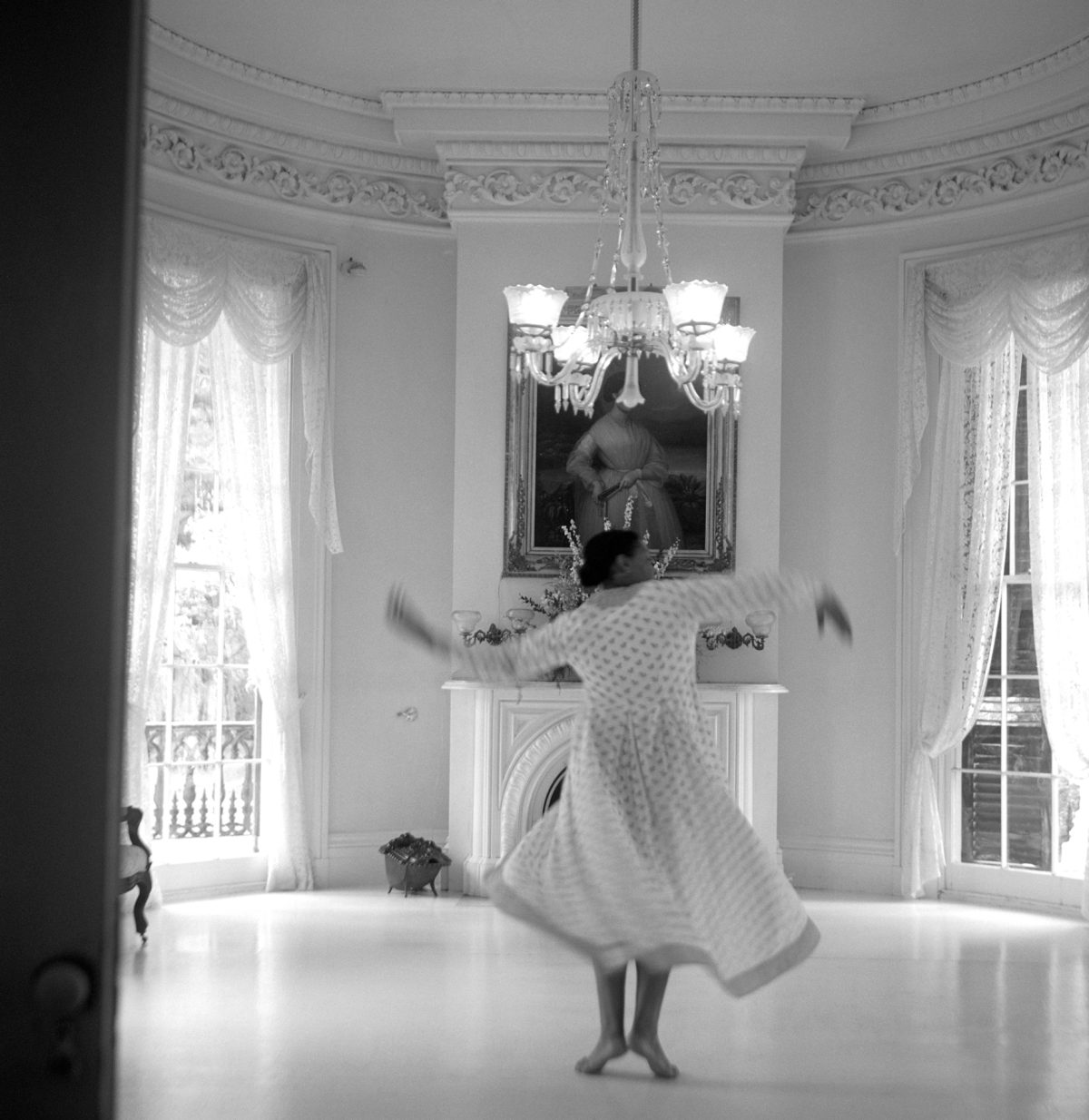

In “Mourning,” a black and white photograph from artist Carrie Mae Weems’s 2008 series Constructing History, two women dressed in black sit next to each other on wooden chairs. Their expressions are solemn. A young child, dressed in a glowing white dress, crouches near on the floor, her arms and head positioned to rest on one of the women’s laps. They sit on a white pedestal. It could be a family portrait, though the scene is made odd by their surroundings. A camera track circles the platform like a mote, while a dolly with a tripod and camera appears to the right, in the middle of capturing the three figures in its slow 360-degree orbit. We’ve stumbled upon a set, one that mixes performance and longing, fact and fiction, in ways that deconstruct the stories we tell about ourselves.
“Constructing History has so much to do with the orchestrations of reality in a very particular kind of way. That becomes the center to the kind of work that I am most interested in,” Weems explained to African American studies and art history professor Sarah Elizabeth Lewis and Studio Museum in Harlem Director Thelma Golden. Their conversation appears in Carrie Mae Weems, the latest volume of MIT Press’s October Files, a series that surveys individual artists through a compendium of essential essays about their work. Edited by Lewis with Christine Garnier, Carrie Mae Weems brings together essays by bell hooks, Deborah Willis, and Kimberly Juanita Brown, alongside poetic reflections by Dawoud Bey, Salamishah Tillet, and others. Sprinkled throughout are images from Weems’s most enduring series — The Kitchen Table Series (1990), From Here I Saw What Happened and I Cried (1995–1996), Roaming (2006) — that provide a glimpse of her elegant and analytical style.

We experience Weems and the monumentality of her work through others’ encounters with her photographs, texts, performances, videos, and installations. In her 1994 essay “Diasporic Landscapes of Longing,” hooks considers Weems’s work in the context of Roy DeCarava, writing how Weems both picks up his project of “claim[ing] Blackness as the aesthetic space of ethereal beauty,” while also going beyond his legacy to critically look at photography as a tool of domination and erasure. Most essays echo this point — how Weems’s restaging of African diasporic experience doubles as an incisive breakdown of Western visual culture and history. Using her body and subjectivity as guide and witness, Weems rejects the two dimensionality of the photographic form, instead constructing emotionally charged landscapes where we can consider the shifting expressions of power, beauty, history, love, and invention.

Curiously, given Weems’s influential stance, Lewis notes in her introduction that the volume exhibits a noticeable ellipsis between years. There are two essays from the mid-1990s, two interviews with Weems from the 2000s, followed by a rush of glittering and robust essays published after 2011. For Lewis and Weems, these gaps speak about the limits of art criticism, institutional support, and canonization. Lewis provides historical context for the belated critical reception — among other things, Black thinkers forcing art historians to recognize and reckon with the massive impact of African diasporic artistic practices on modernism and beyond. Lewis locates Weems within these developments, arguing how her body of work concurrently traces changing attitudes in the reception of Black artists. Weems puts it more bluntly: “My work just gets talked about in the narrowest way possible.”
Weems’s voice punctuates the scholarly deep dives and the critical silences, providing yet another portal of entry into her heady aesthetics and practice. She is acutely aware of the machinations of visual culture, how it can see certain narratives while deliberately unseeing others. Carrie Mae Weems holds this tension, touching upon the stunning scope of her vision while also acknowledging that art criticism has only just cracked the surface of her visual mysteries and provocations.
Carrie Mae Weems, published by MIT Press, is available on Bookshop.
0 Commentaires